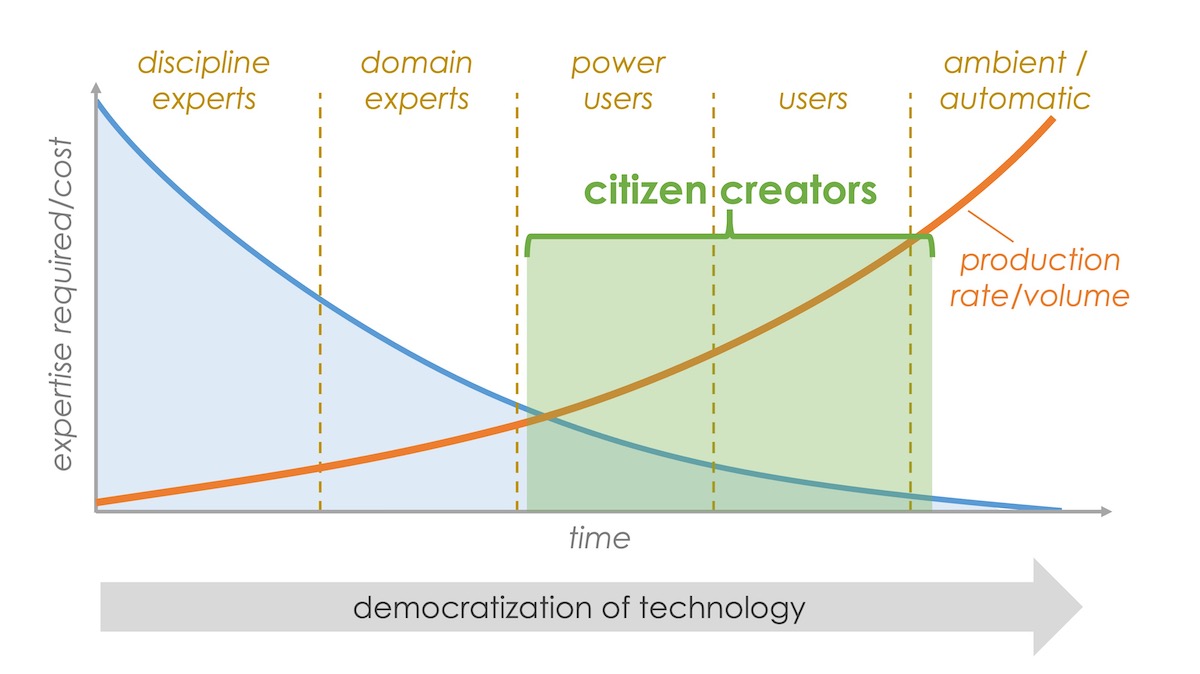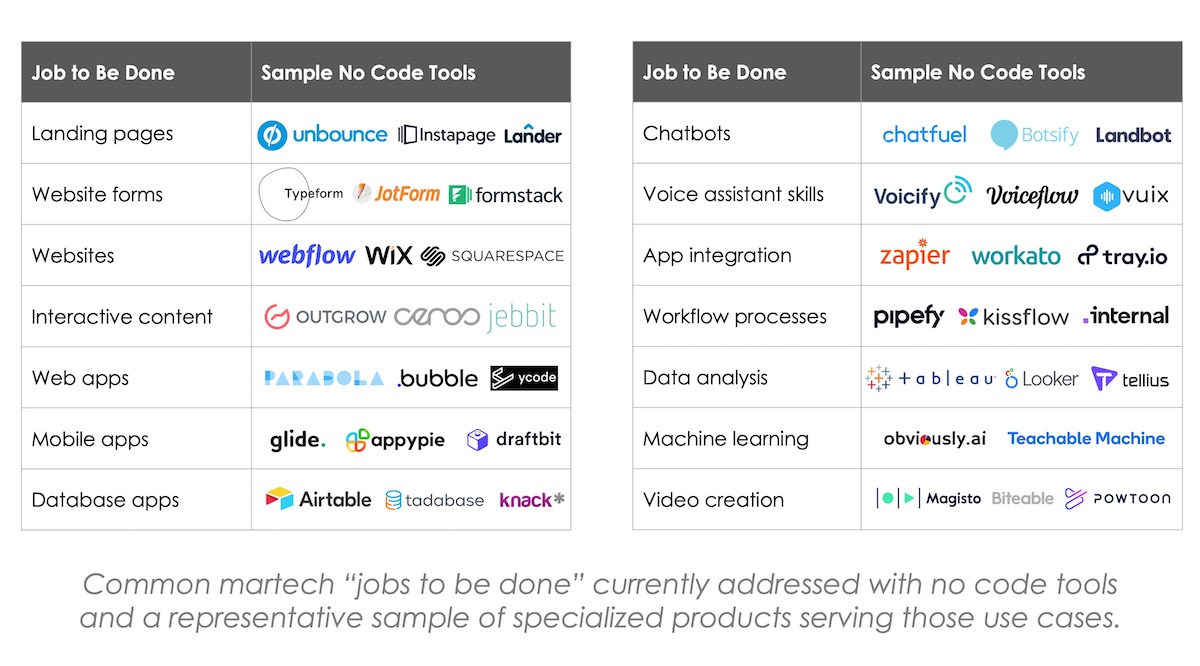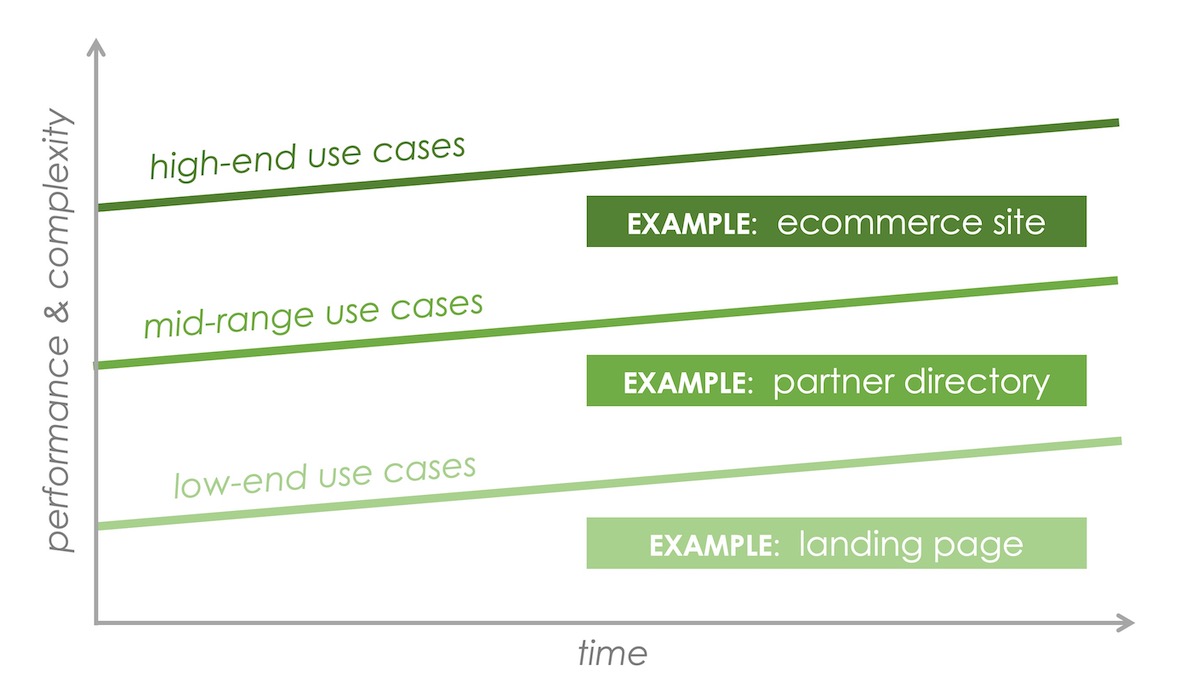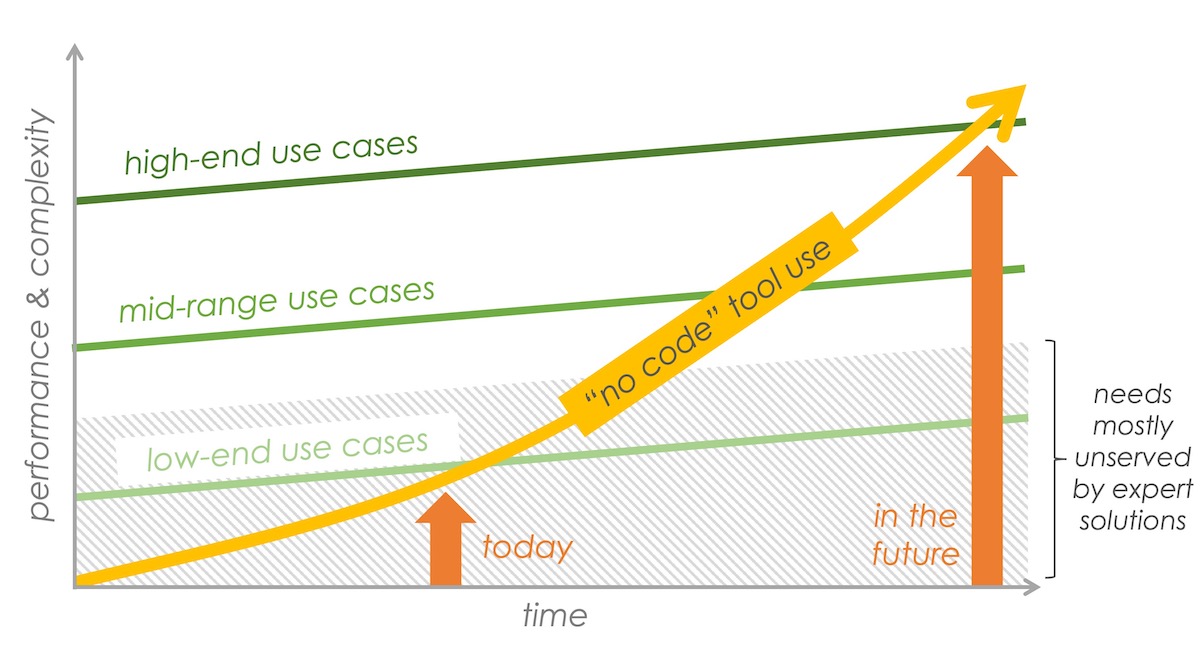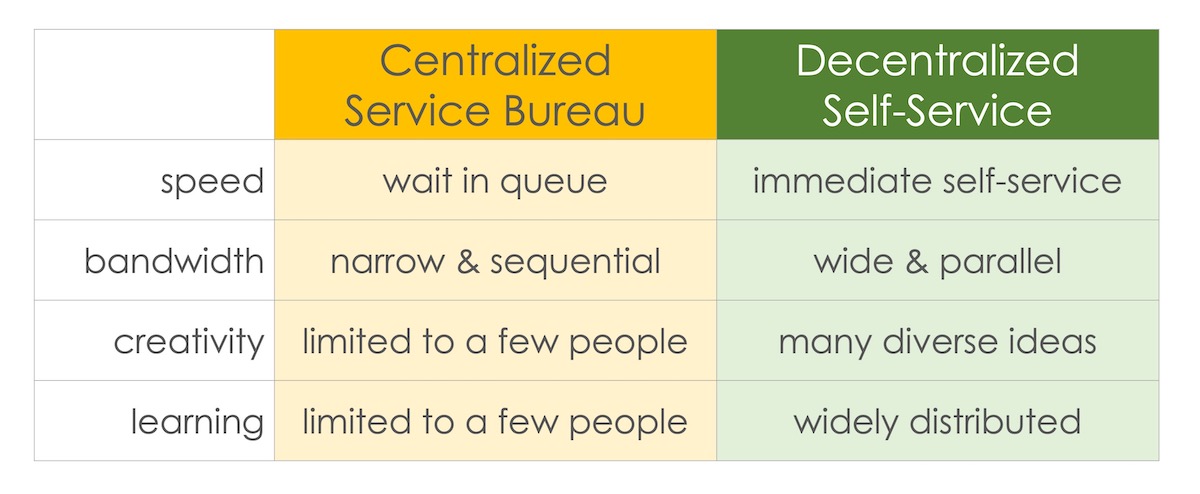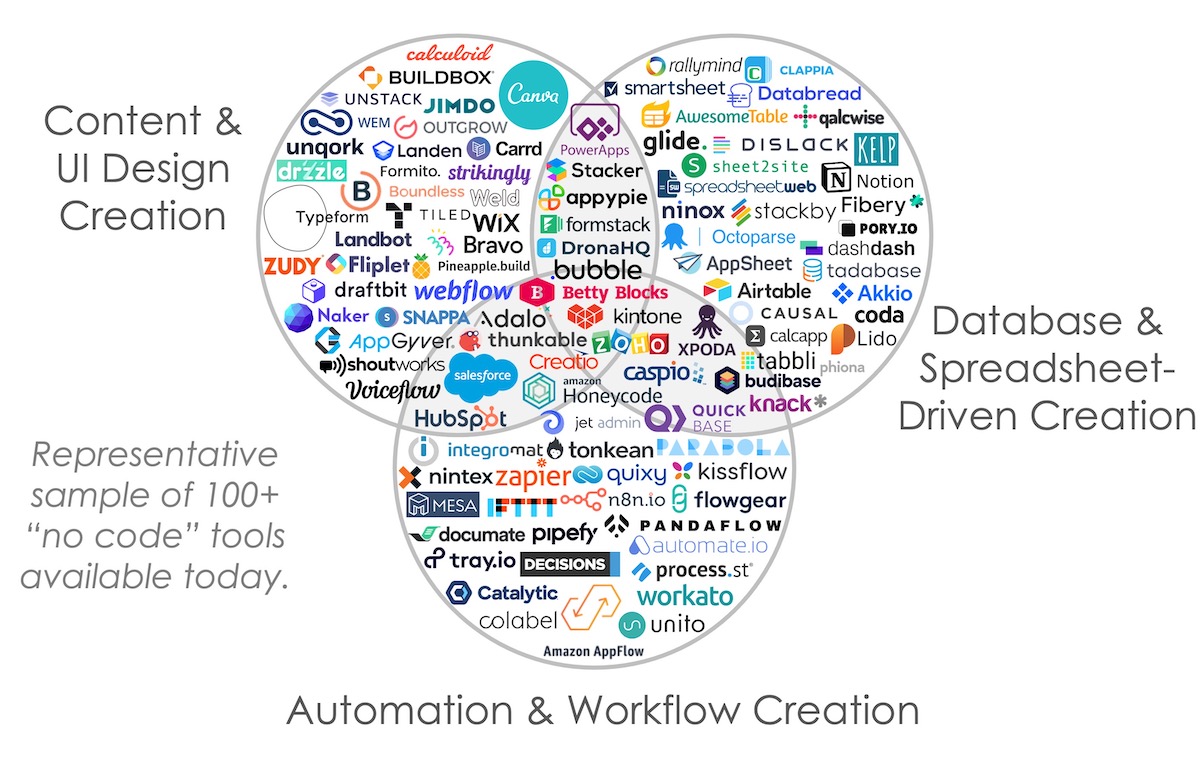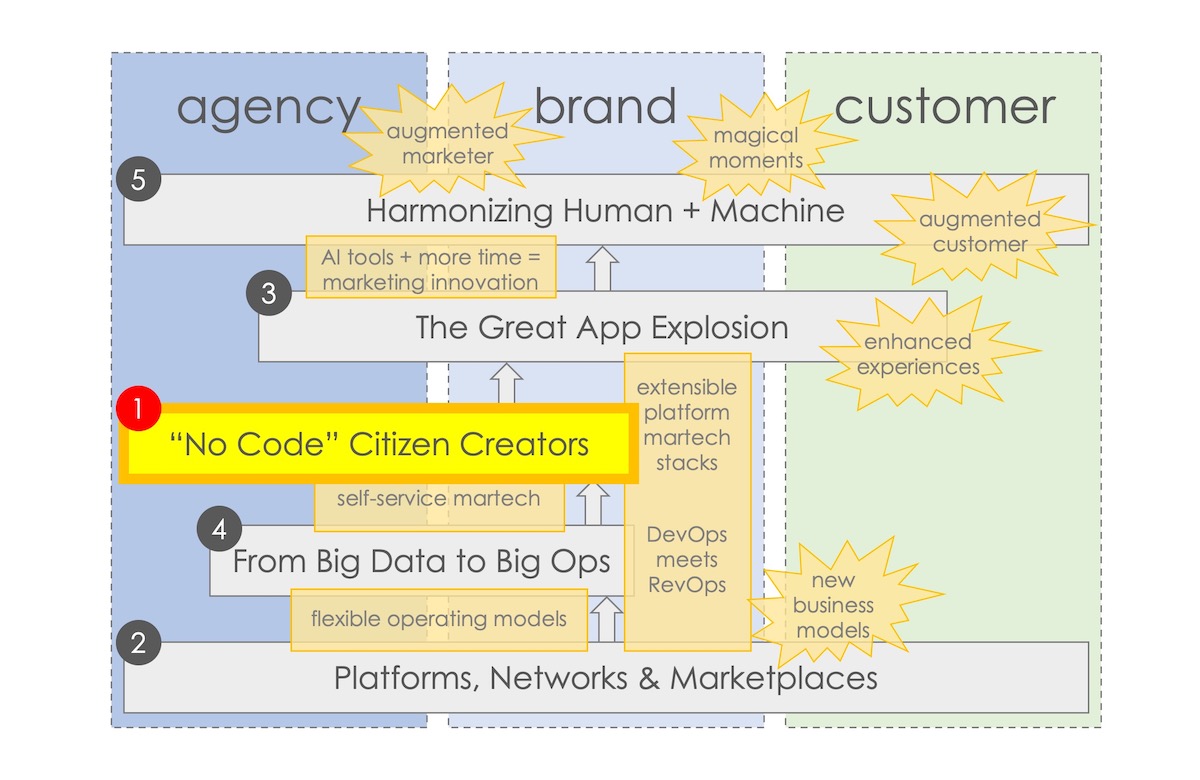
Earlier this year, I collaborated with Jason Baldwin, global head of product management at WPP, on this project to describe five major trends in martech that would shape the decade ahead for agencies and brands. You can download our full paper, including many terrific interviews from WPP executives. I’m republishing it here as a 7-part series.
Fifty years ago, if you wanted to deliver a slide presentation, you needed a specialized professional to create it for you. As described in Before PowerPoint: The Evolution of Presentations by Orana Velarde:
Designs were first put together on white paper using rulers, Exacto knives, rubber cement, and typesetting sheets.
Each slide was designed as a standalone design on a large piece of paper. It had to be proofread and checked for errors until it was just right.
When the large slide designs on paper were ready, they were photographed professionally one by one. The negative filmstrip was then cut slide by slide and framed on the plastic casings.
Creating slide presentations, a laborious and skilled exercise, was out of reach for most people.
Today, Microsoft PowerPoint has over 500 million users. More than 30 million presentations are delivered every day. Anyone can create a presentation. And while the obvious joke is that not everyone should, we can’t deny the massive democratization of visual communication that has resulted from this capability.
This is the essence of the “no code” trend: software that empowers general business users to create things that previously only specialists could produce.
We’re way beyond slides now. Today’s “no code” tools give non-technical professionals the power to create websites, databases, workflows, integrations, mobile apps, web apps, chatbots, voice assistant skills, and more. This category of products is called “no code” because previously you had to be a developer programming with code to build any of these.
With “no code” tools, anyone can be a “citizen developer.”
MORE THAN CITIZEN DEVELOPERS
This power to create isn’t limited to software development either. People who aren’t graphic designers use tools like Canva and Easil to produce their own creative assets. People who aren’t data scientists use tools such as Tableau and Obviously.ai to analyze large data sets and build predictive machine learning models. People without audio engineering skills use tools like Descript to produce podcasts, editing recordings like a wizard simply by typing some text.
In martech, many marketers have adopted marketing automation and customer journey orchestration products without even realizing that architecting such sophisticated customer experiences would have required a team of software engineers to implement not too many years ago. Now it’s drag-and-drop.
More and more specialist superpowers are being bottled into software that anyone can use. These products aren’t all called “no code” — a label generally applied to tools that substitute for common programming tasks. But they are all in the spirit of this citizen creator revolution.
It’s impressive what “no code” enables today. But in the decade ahead, advances in AI will put even more amazing capabilities at the fingertips — or voice command — of citizen creators of all kinds: citizen developers, citizen graphic designers, citizen data scientists, and so on.
For example, the GPT-3 API recently released by OpenAI is powering tools such as Snazzy.ai that generates Google Ads, Facebook Ads, landing pages, emails, blog posts, etc., as a remarkably proficient “robot copywriter” that anyone can direct on their behalf.
Imagine what will be possible in ten years’ time.
NO CODE DOESN’T MEAN NO EXPERTS
This raises the discomforting question of whether we will still need experts at all?
In short, yes. Most “no code” citizen creator tools address needs that are not being served by specialists, because the time and cost such expert production required couldn’t be justified for relatively small or simple use cases. Such use cases would be overserved by such specialists — like firing a bazooka to rid a picnic of a mosquito.
In this way, the rise of “no code” tools is a quintessential example of Clayton Christensen’s theory of disruptive innovation. At first, these tools address needs that incumbents — in this case, professional software developers, graphic designers, data scientists, etc. — consider too “low end” to be a good use of their time.
An experienced web developer does not want to spend their days building landing pages for each keyword in a search marketing campaign. They’re quite happy to let a marketer use a product such as Unbounce to build out troves of pages and A/B test them on their own. For the marketer, this costs them ~$2,500/year for the “no code” tool instead of ~$100,000/year for a dedicated web developer.
Specialists want to apply their skills to more interesting and challenging work. And indeed, more advanced or important projects still benefit from their expertise. Going back to slides, you’re not going to hire a firm like Durate Design to craft a deck for a monthly metrics review with your team. But you would hire them to craft a killer keynote presentation for a major conference.
The value specialists bring to mid-range and high-end use cases is less about the mechanics of the production, and more about the expert thinking, deep experience, and clever imagination they apply to the design and management of what’s being built.
As an example, building a registration form on a landing page is a low-end use case. Building an interactive directory of partners on a website is more of a mid-range use case. Building the entire online experience for a new direct-to-consumer (DTC) brand is a high-end use case. As you tackle larger and more complicated creations, the blueprint of what to build is often more valuable than the keyboard-clacking labor that goes into its construction.
Specialist talent will continue to be in demand for that higher-level expertise, empathy, and insight that extends beyond the scope of algorithms in even the best no code tools.
However, over time, disruptive technologies that start by addressing unserved, low-end use cases steadily improve. As they do, they serve more advanced use cases that people previously didn’t think were possible. This is what makes such innovations “disruptive from below.”
DECENTRALIZED SELF-SERVICE
As “no code” tools become more suited to mid-range and high-end use cases, we’ll harness their power on both ends of the talent spectrum. Non-specialist business users will use AI assistants embedded in these tools to guide them through the process of building ever more advanced creations. But specialists will also wield these tools as a way to accelerate production — making it easier, faster, and cheaper for them to implement their ideas.
The result will be exponential growth in creators and digital creations. For instance, AppSheet, a “no code” web app builder offered by Google, claimed on their website that 2,413,351 apps had been built with its platform as of August 30, 2020. Around one million of those were created in just the past year, since August 2019.
Rajeev Batra, a partner at the VC firm Mayfield, recently framed the scale of what’s possible by commenting how powerful it would be “to see not twenty million developers [building] really cool software — but two, three hundred million people developing really cool, interesting software.”
An orders-of-magnitude expansion of things that can be created – and who can create them — will drive changes in the way marketing is organized and operates.
In this past decade, many companies implemented a centralized “service bureau” model — often called a center of excellence — to handle most marketing creation and deployment tasks. Create a web page, assemble an email list for a special offer, analyze campaign results from the previous month by a different segmentation, produce an animated explainer video to embed in a blog post, etc. Marketing teams had to route such requests through that center, which was often a bottleneck.
“No code” tools will empower marketers to self-service many of these tasks instead. This will accelerate the speed by which things are produced. They don’t have to wait in a queue for processing. It will increase the bandwidth of the number of things that can be produced within a given timeframe, as more marketers can be creating in parallel, instead of waiting their turn sequentially.
Self-service “no code” tools will significantly reduce the cost of experimentation, as marketers will be able to try more ideas on their own, quickly and cheaply. In turn, this increased diversity of experimenters will tap into greater creativity from across the organization. And the learning that results will be more widely distributed too.
But the “no code” movement isn’t just about empowerment. It’s a huge lever for efficiency too.
“No code” tools for workflow automation and integration will dramatically accelerate marketing processes across widely distributed teams and tools, even across organizational boundaries between brands, agencies, and channel partners. Manual steps will be steadily replaced by scheduled and triggered automations, freeing marketers to focus on craft more than chores.
Enabling such “no code” automation will drive both commercial martech vendors and internal company developers to provide greater programmatic access to their software through APIs. While user interfaces for humans will still be important for many apps, we will expect the data and functionality of all apps and platforms in our business to be accessible via APIs — so that they can be orchestrated through “no code” automation and composed into virtual compound apps, configured and reconfigured on-the-fly for any operational need.
The 2020s will see the rise of the “marketing maker” — non-technical marketers who are able to create the majority of digital experiences they imagine with their own hands.
Yet even in a more decentralized marketing organization, there will still be need for centralized expertise to provide the scaffolding and governance in which all of this distributed creation is happening. A common foundation and framework that balances diversity with consistency.
This leads to the next trend of platforms, networks, and marketplaces — and the opportunity for conceptually “platforming” marketing.
Stay tuned for Trend #2: Platforms, Networks & Marketplaces to be published shortly. You can also download the full paper at any time.

